Some more graphs from David Clark, up to week 34 (week ending 21st August). ONS data is here. (All graphs can be clicked to enlarge.)
England and Wales all-cause mortality.
All-cause mortality for England and Wales, with the trend for the ten-year average in there for context.
All-cause mortality for England and Wales by age group. Notice the small recent uptick in deaths in the 45-64 range. David says: “compared to past years the number in the 45–64 age range is more than past years. Is this the consequence of all those things our National Covid Service has not attended to this year?”
The same data as above but scaled up to concentrate on the age groups 75 and under.
England and Wales all-cause mortality age composition.
From week 11 of 2020 the ONS figures include “a separate breakdown of the numbers of deaths involving COVID-19. That is, where COVID-19 or suspected COVID-19 was mentioned anywhere on the death certificate, including in combination with other health conditions”. A death can be in both categories if it was both a Covid death and a respiratory death. It’s clear from this graph that most Covid deaths were not respiratory deaths.
“[Covid] Deaths by date of death rather than date of registration. Using England only to compare deaths in hospital attributed to COVID-19 with the total recorded by ONS. The difference being COVID-19 deaths not in hospitals.”
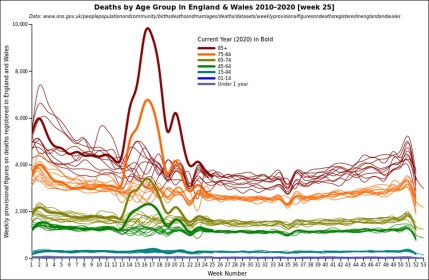
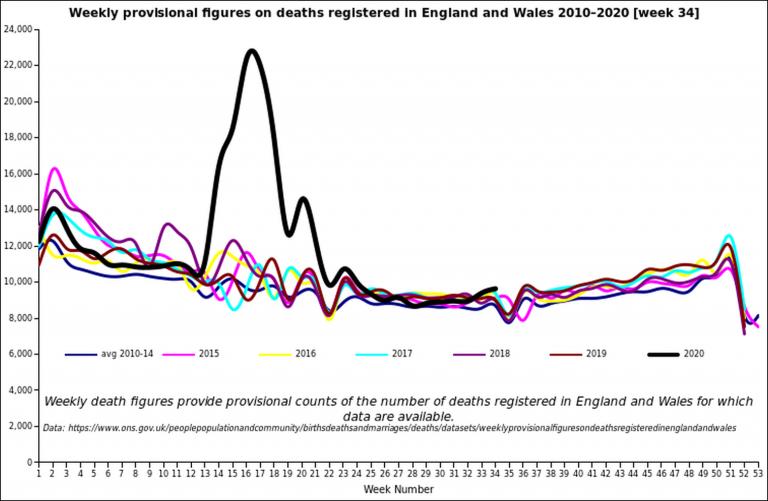



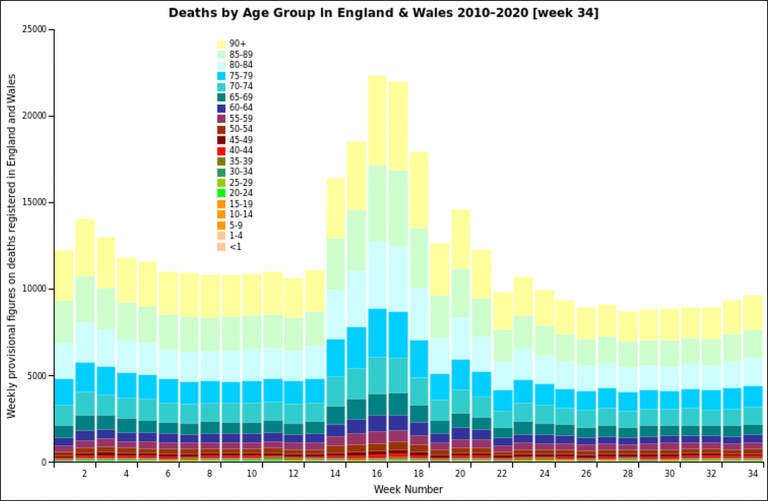
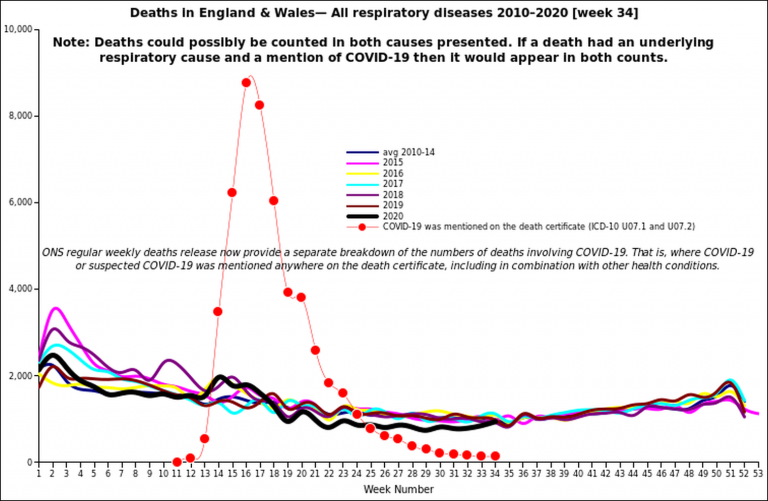
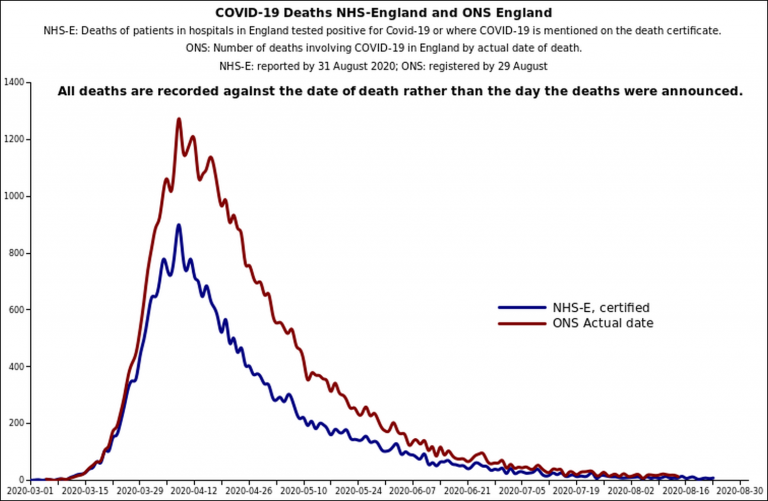
3 thoughts on “Week 34 graphs from David Clark”
Thanks David
This is well worth reading, a lot of key points. Starts with “cases” and goes on to reveal the many other misrepresentations and errors
Agree with all he says and it is same as I been saying since mid-late February
Pcar — Thank you for that link to Dr. Kendrick’s post. It really clarifies the situation with respect to the imprecise terminology being used by media & government to spread fear.
Interestingly, Dr. Kenrick makes a strong evidence-based case that the ultimate mortality rate among the general population from the dreaded Covid-19 will be about 1 person in 1,000 — about the same as from flu in a bad year. If we go all the way back to the Diamond Princess cruise ship with its passengers heavily weighted to what we now know are the At Risk group (old and/or sick), the mortality rate among the “sample” population of passengers & crew was around 2 persons in 1,000. The information was available very early in this contretemps that we were not looking at a serious pandemic.
Of course, the media and the bureaucrats played up the initial videos from China of people collapsing in the street (never seen anywhere else) to demand Lock Downs. Meanwhile, for anyone keeping score, life in China has fairly much returned to normal. Schools, restaurants, businesses, markets are all open — even mass entertainment functions; some people chose to wear masks, most don’t. But here in the West, we are still tied in knots. It makes one wonder.
Bureaucracy takes time to catch up with reality. Need to draw a line under this whole episode and move on. It’s all very silly now. Time to get back to work.
Comments are closed.